Based on interviews carried out remotely with young indigenous women from Central and South America. The full list of participant names and bios appear below.
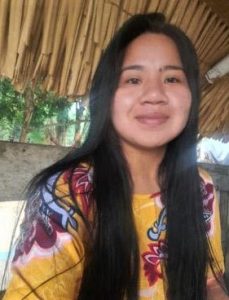
The Covid-19 pandemic severely impacted indigenous populations in Central and South America. “Although the dissemination of the virus has dropped, we know that it is in our midst. It hasn’t yet ended and it is our duty to take care of ourselves,” said Lucimeire Suruí (age 24), who also reported conflicts that her people experienced in the past, some armed, but primarily the epidemics that have almost extinguished the Suruí population. She commented on the surges that her people experienced and how they were able to recover with the help of medication from FUNAI (Brazilian National Foundation for Assistance to the Indigenous Peoples).
Fear persists in the minds of indigenous people due to past trauma that has not yet been healed. COVID-19 is a particular threat to the elderly, who are most vulnerable in a pandemic. Their loss is irreplicable in more ways than one. Community elders carry the people’s memories, knowledge, science, and keep their ancestry alive by passing on their knowledge and educating younger generations. Especially in light of this crisis, the importance of the role of young adults in their communities is increasingly understood by indigenous peoples – they have a leadership role to play in helping build a better future.
Each population has their own realities and concerns. The Suruí people believe that the virus represents an overall threat to their health, economy, and culture. Their territory is one of the Amazon regions most affected by deforestation in Brazil. Lucimeire expects a great maturing of her people and shares a deep reflection on survival: “We live in a very threatening scenario. Many of the governmental policies are based on the perspective of the non-indigenous […] The Suruí people [need governance] based on [our] values and principles. Only in this way can we win the battle, sit at the table with the federal government, say what we wish, and have autonomy in our territory. I believe that this crisis can generate the unity to defend [our] territory in the future.”
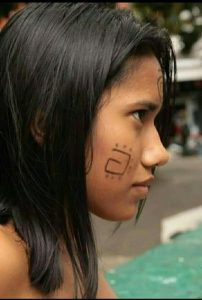
The Murui community, according to Aleja Herrera (age 18), has already experienced epidemics, such as measles and chickenpox, and with the help of traditional Murui doctors, wisemen, and medicinal plants, these diseases disappeared. The Murui cultivate plants for subsistence and to preserve cultural practices through rituals and medicines for their own health and spiritual well-being.
Gabriele of the Pankararu community (age 19) commented on impacts that COVID-19 had on her life and her wishes and expectations in the post-pandemic world. She stated that as a college student, her life changed radically when the pandemic affected the continuity of her classes, and that this prevented her from meeting her expected goals for 2020 and harmed her mental stability. At the same time, she is happy that she was able to go back to her family and community.
Francisca Léon (age 22) of Mexico is interested in working to defend the rights of women, health, and freedom, through activist groups such as “United Women.” When the coronavirus began, she explained what was going on for many people at the Tzeltal community. Some believe that the virus was a governmental conspiracy and even fake news. People began to fall ill, nobody was prepared, and the Tzeltal were suspicious of the doctors, public hospitals, and news reports, so they sought the traditional cure methods. “The pandemic arrived devastatingly, causing chaos. Indigenous or not, nobody was prepared for such a situation,” says León. Like thousands of others, Francisca continued to work out of necessity – the right to quarantine is not an option for everybody. The virus was a warning for many indigenous peoples, and a reminder to depend less on external resources and more on their own goods, economies, and healthcare.
Francisca says, “the spirit of the indigenous peoples is to advance and care for the environment. Sustainably planting and maintaining their community also helps their economy.” Agriculture has become a critical activity to supply food without travelling downtown, ensuring greater safety for the community from COVID-19.
“The pandemic raises fear, and each minute there is new news on the calamity to which we are exposed; the fight is continuous but there is still a long way to go,” says Gabriele Pankararu. She also mentioned one of her greatest fears is that the important annual traditions of her people cannot be held, the large festivities that unite 14 communities and other local people. Gabriele finds that the traditions are a form of ongoing self-affirmation as indigenous peoples, not just a symptom of the extreme circumstances of COVID-19.
Younger indigenous generations believe that the uncertainties of the normal “day to day” will continue. The world and the people will adapt to new routines, each in the context of their lives and communities. And although the moment we are now living is chaotic, they believe that it is possible to resist and progress at the “individual me” and “collective me” levels. They also aim to re-learn how to value and respect life, whether their own or of others, to more intensely enjoy the present moment, and to maintain hope for a better tomorrow.
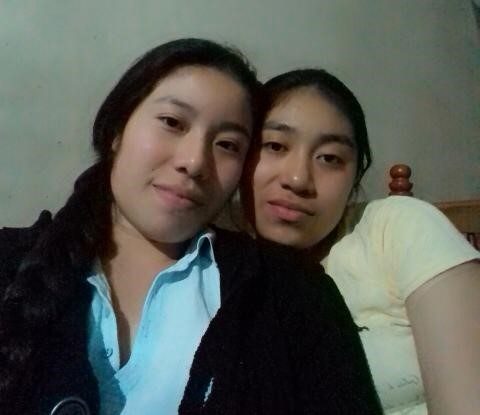
Despite the many things these women have in common, their future aspirations differ in some aspects. Marisol (age 25) of the Waorani people states that limiting the exploitation of crude oil is very important for the protection of the Amazon Forest and that she wishes to resume attending classes and meeting new people when the pandemic is over. Lopez Lucero (age 23), from the Tzeltal community in Mexico plans to focus on affirming her community’s rights: “What I would like to do when the pandemic ends is be free and hold our rights and freedom.” These young women share the same wishes of non-indigenous peoples, clearly demonstrating the central similarities between young people across cultures.
Lucero confesses that “one of the lessons that this pandemic has taught was to realize that we were too much in a hurry to live, to define our future. So, when the pandemic started, everything was gone and we had nowhere to go.” She observes the need for people to wind down and perceive themselves as individuals – a reflection that can help people practice more empathy and greater social responsibility in everyday life.
All of the indigenous youth interviewed expressed conviction that connecting to their roots has the power to change evil and overcome challenges, not only for themselves personally, but for others as well. Aleja states that “If people understood how indigenous people think and the importance of the world, of respect and care for the earth, this would bring a change […] and I feel that the thoughts of those that act wrongly would be changed.”
Aleja trusts indigenous teachings and believes that they do not belong to only one person but everyone who is connected by ethical and cultural ancestries and carry basic knowledge of the original peoples. The truth in this is inspiring.
The outcome of the interviews enabled a deep reflection on the importance of ethnic affirmation and recognizing the aspirations, adversities, and dreams of young indigenous women. Their perceptions became more personal and sensitive due to the pandemic, but also show the importance they place on their day to day lives and working to maintain traditions. We note that, despite the similarities and broader ethnic context of interviewees, there is a singularity that stands out in each of the peoples – after all, each population is unique. The current context warns us to continue to be conscious and cautious during COVID-19, but also not to forget chronic problems that already existed before, such as illegal activities in indigenous territories and deforestation and its harmful consequences, which in light of the pandemic, have been expanding impetuously.
Authors
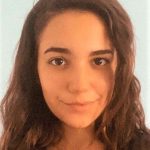
Tula Borges (20) is in her second year at the University of San Francisco, where she studies sociology with a specialization in environmental studies. Borges grew up in California, USA. Her father was born in São Paulo and her mother is an American-Brazilian dual citizen, also from California. Borges is interested in working with communities in developing nations to help build sustainable economies so that families of all types and places have access to life’s basic needs. She also has a passion for animal rights, environmental conservation, and social engagement.
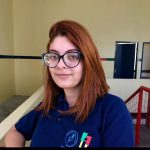
Maria Clara Barcelos (19) is a student of Social Sciences at the Federal University of São Paulo (UNIFESP) and lives in Guarulhos (second most populous city of the State of São Paulo). Her academic interest is in the field of visual anthropology.
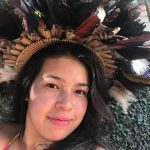
Raissah da Silva Laborda (24) is a student of Social Sciences, focused on anthropology, at the Federal University of São Carlos (UFSCar) and currently lives in the State of Rondônia. She has indigenous ancestry on mother’s side and her current interests lie in the fields of language and speech.
Interview participants
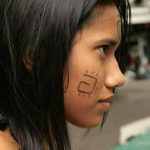
Alejandra Herrera (18) is from the Murui community. She grew up in Colombia with Murui origin, although she primarily speaks Spanish. She is a college student in Bogotá, specializing in community education. Herrera is interested in working for the well-being of individuals and edifying and transforming the lives of whoever she can as a teacher. She has a passion for humanitarian work.
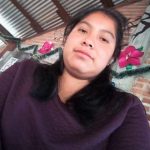
Francisca León (22) is from the Tzeltal community. León speaks Spanish and her Tzeltal language. She helps the family harvest plants and collect and administer the resources for the community. Although León has a passion for agriculture and composting, she hopes to work with women in the defense of their rights and health. León hopes to resume classes so that she can learn and gain experience in women’s rights work.
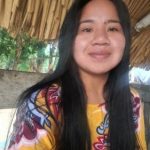
Lucimeire Sodãn (24) is from the Paiter Suruí people of Rondônia, Brazil. She is bilingual – her native language is Tupi Mondé and Portuguese is her second language. Sodãn spends most of her time helping in the vegetable garden of the community, planting, and collecting resources. She helps her family and the community in the harvesting and planting of food. She recognizes the importance of a community working collectively to overcome the external barriers that many peoples face.
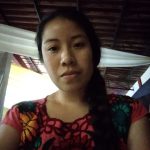
Lucero Del Alba (23) is from the Tzetal community in the State of Chiapas, Mexico; she currently studies teaching at the University. The Tzetal people live under a Mexican system known as “uso y costumbres” (uses and costumes), that aims to respect the authority and traditional indigenous policies.
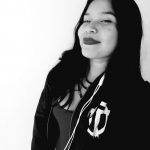
Marisol Sevilla (25) was born in Ecuador and is from the Waorani people, which means “men”; her ancestral lands are located between two rivers, the Curaray and Napo. It is important to emphasize that these lands are threatened by the exploitation of crude oil and the illegal extraction of timber.
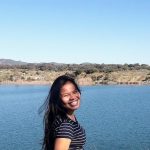
Adriele Braga (25) is from the Baniwa community of the northeast region of the State of Amazonas, Brazil. She is graduating in psychology at the Federal University of São Carlos (UFSCAR). The Baniwa have a longstanding history of resistance, in addition to having suffered from the exploitation of rubber in the 14th century. The Federal Government of Brazil recognized the collective rights of these peoples and delimitated their lands only in 1928.
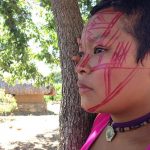
Mônica Nijbe Joonide (22) is from the Nukak community of the southeast region of Colombia. This population is one of the six groups known as the Maku people, who are all nomad hunters-collectors that live in the northeast of the headwaters of the Amazon basin.
Gabriele Pankararu (19) is from the Pankararu community and is studying Gerontology at the Federal University of São Carlos (UFSCar). The Pankararus are a Brazilian indigenous population that lives near the midpoint of the São Francisco River in the State of Pernambuco.
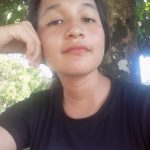
Ruth Figueroa (22) is from the Quíchua community of Peru (some also live in Bolivia, and even less in Argentina and Chile). Quíchua is still a language spoken by a significant number of people among the natives of Peru.
Viewpoints showcases expert analysis and commentary from the Forest Trends team.
Connect with us on Facebook and Twitter to follow our latest work.
